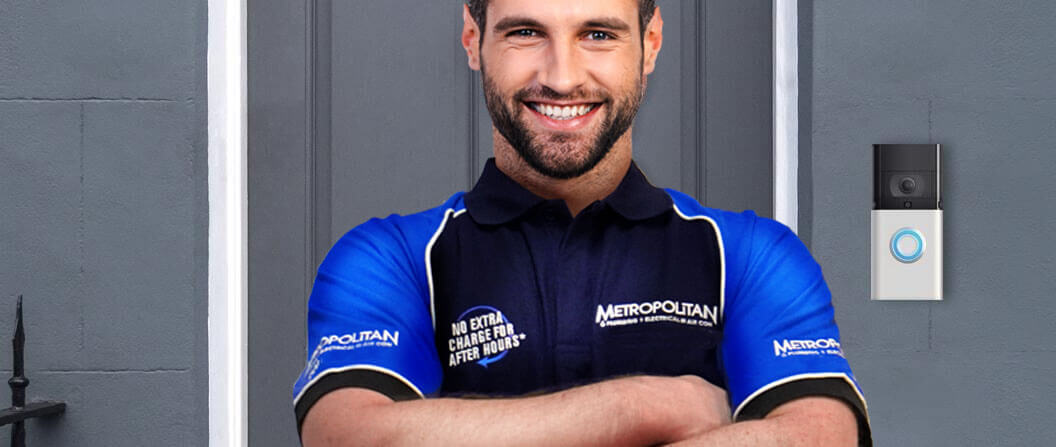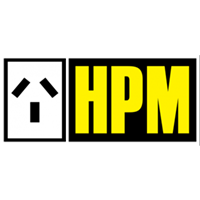
What's the Best Ceiling Fan?
With summer just a couple of months away and the warmer weather certainly beginning to pick up, chances are you’re probably considering how you make your home as comfy as possible.
Yes, you’ve got your air conditioning or your evaporative cooling, but sometimes you just need a little air movement without significantly cooling the house down. In this case, the humble ceiling fan might just do the job sufficiently enough.
But what’s the best ceiling fan for your home?
You might think you can just pick out any new ceiling fan and it’ll get the job done, but we’re here to burst that bubble. As it turns out, the right choice can be a nuanced process. Whether you’re replacing an existing fan or installing a new one outright, we’re here to help you make an educated, informed choice.
What Goes into Choosing a Ceiling Fan?
Like many major household appliances, there are many factors that many of us will consider when choosing the best ceiling fans for the home. Among the major features and common points of consideration are:
- Fan size
- Number of blades
- Speed settings
- AC motor or DC motor
- Whisper quiet operation
- Energy costs
- Smart features and functionality
- Fan design
Let’s take a look at some of these key features in greater detail.
Number of Blades
The number of blades your ceiling fan has will impact several performance factors including its drag, speed, strength and noise. You might think that the more blades, the better your fan will be. However, that is not necessarily the case.
Fans with fewer blades have less drag. This allows them to spin faster and generate more air movement. This means they create a stronger wind effect which can give the feeling of cool air in the room. Fewer blades also mean the fan itself is lighter. Less weight means the fan uses less energy to spin and can be more cost-effective.
That being said, you will get closer to whisper-quiet operation as the number of blades increases. Fans with more blades are more balanced which also helps keep them quieter. But more blades can also mean a higher cost.
So, What is the Sweet Spot Number of Blades?
If you’re looking for a fast-moving fan that effectively moves cool air and creates a good chill effect, then a ceiling fan with 3 fan blades is your best option.
But if you’re after the perfect “good night’s sleep” fan for your bedroom, you’d be better off with a 4 or 5-bladed ceiling fan. While these might be more expensive upfront and have marginally more expensive running costs, this is made up for by the quieter experience.
Ceiling Fan Design
From the functionality to the blade material, there are numerous factors to consider when it comes to your fan’s design.
You will generally find that fan blades are made of:
- wood
- plastic
- stainless steel or
- aluminium
Generally speaking, your choice of blade material won’t affect ceiling fan speeds. However, metal blades can be noisier than their wooden or plastic counterparts.
Aesthetic and Functionality
More than just providing a gentle breeze, your ceiling fan can have a big impact on the overall aesthetic of your home too. Whether you’re after a modern aesthetic (flush mount ceiling fans are great for this), a statement piece or just want something basic, this is also something to consider.
And what about the functionality of your ceiling fan? Would you be happy with a model that uses a pull cord to turn it off and on? Or would you prefer one with a wall switch or remote control operation? What about a ceiling fan with an integrated light? Many modern fans combine the ceiling fan with an LED light kit into one fixture that you control from a wall switch.
When picking out the best ceiling fans for your home you will need to take all these design features into consideration.

The AC vs DC Ceiling Fan Decision
No, we’re unfortunately not talking about the iconic Australian rock band. We’re talking about the different types of electrical currents!
There are two types of current when it comes to electrical systems – alternating current (AC) and direct current (DC). Most ceiling fans are AC; however, a growing number of fans with a DC motor are reaching the Australian market.
Why Choose a DC Ceiling Fan?
Power companies provide us with AC electricity. This can flow in both directions. DC only flows in one direction. The main idea behind DC ceiling fans is that by converting your AC power to DC, you can save energy.
When comparing AC to DC ceiling fans, there are a few benefits to DC:
- DC is more energy efficient
- Generally quieter
- More speed options
- Lighter and more compact motor
While DC fans have a lot going for them, it will also come down to what is readily available in your area as well.
Ceiling Height
The National Construction Code requires minimum ceiling heights throughout your house to be between 2.1 and 2.4 metres, depending on the particular room. This, naturally, will have implications for your choice of ceiling fans. Each fan is slightly different and has a different height at which they work most optimally.
Are your ceilings much higher than this? That’s OK. You can actually install an extension downrod that will lower your ceiling fan to an optimum height that won’t leave you with stagnant warm air. Alternatively, if your ceilings are too low but you still want the benefits of a ceiling fan, there are low-profile fans available. You can even get flush-mounted ceiling fans for any room with a low flat ceiling!
Ceiling Fan Size
Whoever said “size doesn’t matter” clearly doesn’t have the perfect ceiling fan installed for their home. Read any credible ceiling fan reviews online and you’ll soon discover that size does indeed matter.
When looking to install new fans, you’ll want to ask, what ceiling fan size do I need? Too small and it won’t move enough air. Too big and you might be using more energy than is necessary for the size of the room. Just like Goldilocks, you want one that is just right.
How Do You Measure Size?
When we talk about the size of a fan, we’re speaking about the diameter – from the tip of one blade to the tip of the other directly across from it. This can range from approximately 90 to 240 cm in the home.
Generally speaking, the average living room would be suited to a medium-sized fan at 130 to 140 cm. In the bedroom, a small to medium-sized fan at 120-130 cm is appropriate.
The best ceiling fan for your home, however, will depend on the specific size and dimensions of the room. This is where an expert electrician can assist you in choosing appropriately-sized ceiling fans for your home.
Energy Efficiency
Several factors contribute to the energy efficiency of your ceiling fan.
- Number of blades: As the number of blades on your ceiling fan increases, so too does the energy required to spin it.
- Fan size: Choose a fan size appropriate for the size of the room it is in. It comes back to the Goldilocks principle we mentioned just above.
- Blade material: Lighter materials like wood or plastic can reduce the energy needed to move the blades, improving efficiency without sacrificing airflow.
- Motor type: Choose a DC ceiling fan, as these are generally more energy-efficient compared to traditional AC motors.
When we’re talking about energy efficiency, there’s an obvious link to running costs as well. According to Canstar Blue, your ceiling fan could be costing you as little as 0.13 cents per hour on a low setting. Even on higher speed settings, you’re still only paying 1.29 cents per hour.
The Ceiling Fan vs Air Conditioner Energy Efficiency Comparison
The average reverse cycle air conditioner can cost you between 33 and 40 cents per hour. That makes your ceiling fan 25-300 times more energy efficient than a reverse cycle air con!
While your ceiling fan doesn’t have the same heating and cooling effect as an air conditioner, the combination of the two can help bring your energy bill down. They do this by moving the hot and cold air in such a way that it maximises the cool or warm feeling in a room. This means you can set the thermostat higher in summer and lower in winter and save money!
When picking the best fans for your home, it’s worth looking into one with a reversible motor that you can use with your air conditioner. The reversible motor means your ceiling fan can spin in both directions – anti-clockwise in summer and clockwise in winter.

Outdoor Ceiling Fans
Ever considered having an outdoor ceiling fan? They’re a great way to keep cool in the summer with a gentle, controlled breeze, as well as a great way to keep the flies and mozzies away. Add in an LED light and you’re set up for an easy, breezy night in your alfresco setting.
Unfortunately, you won’t be able to simply install a regular indoor ceiling fan in an outdoor environment. The first thing to consider is whether your fan is made of weather-proof material. We recommend stainless steel, aluminium or plastic.
You’ll also need to seal the motor to stop moisture from getting inside and damaging it. You can look at the fan’s IP rating to see whether or not it is suitable for outdoor use.
How to Choose a Quiet Ceiling Fan
Perhaps one of the biggest deciding factors on what the best ceiling fans are for your home is how noisy they are. Generally speaking, well-balanced fans are quiet fans. Ceiling fans with more blades also tend to be more balanced.
As your fan grows in age, the blades can become unbalanced and loose, causing more noise. A simple fan-balancing kit can solve this.
You’ll also need to consider how well it has been mounted to your ceiling. A poorly mounted fan will be sure to make some noise while it spins.
The material of the blades can also have an impact on how noisy your ceiling fans are. Wood and plastic blades tend to be quieter.
Which Ceiling Fan Should I Buy?
The best ceiling fans for your home really come down to your preferences and priorities. How much air flow do you want? Do you want an LED light or remote control included? How energy efficient do your ceiling fans need to be? Then there’s size consideration, materials, and more.
This can all get confusing very quickly. An electrician from Metropolitan Electrical Contractors can supply and install the best ceiling fans for your home. Contact us today for more information about our ceiling fan services.
Please note: This information is provided for advice purposes only. Regulations differ from state to state, so please consult your local authorities or an industry professional before proceeding with any work. See our Terms & Conditions here.
Published: 2024-10-02



























